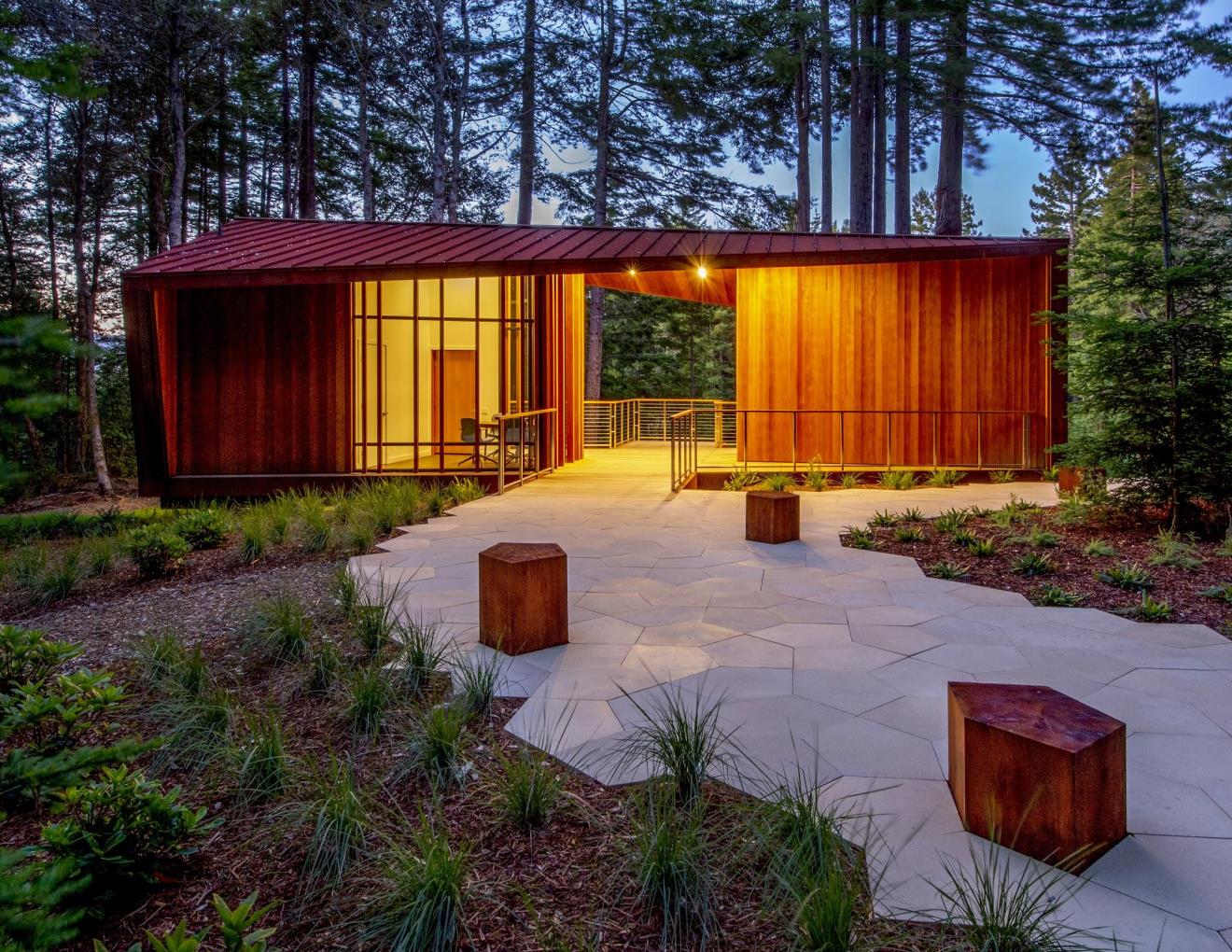
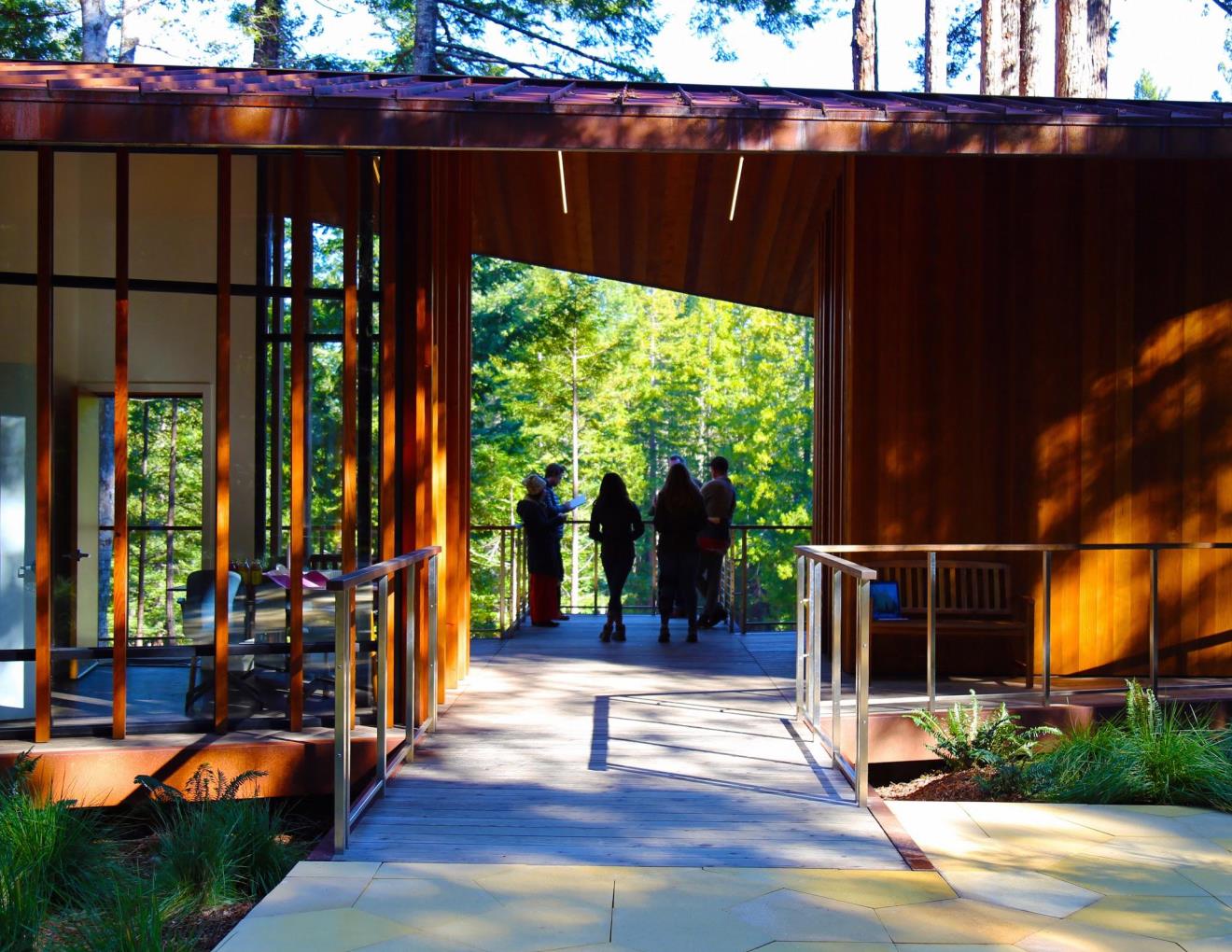
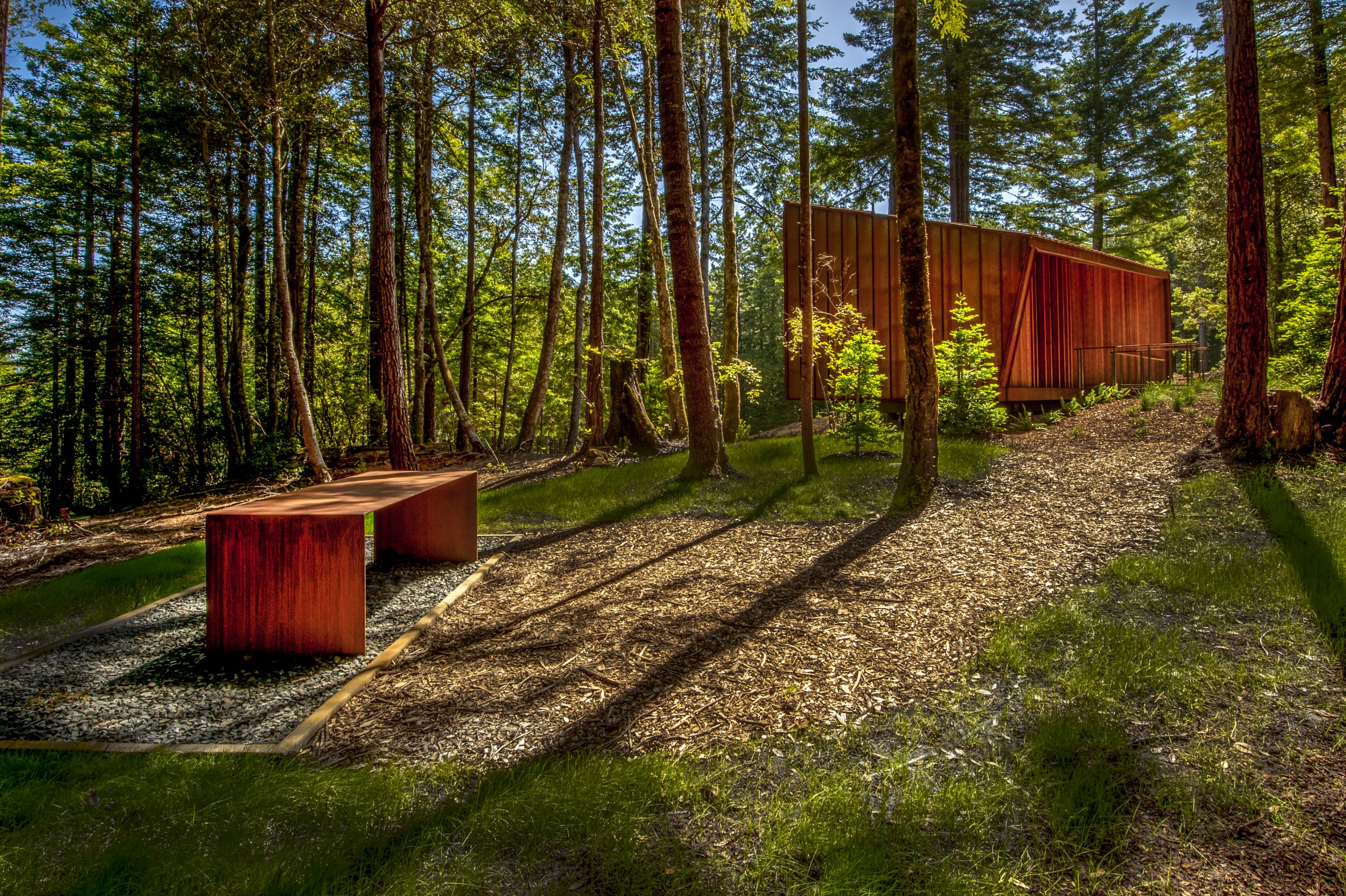
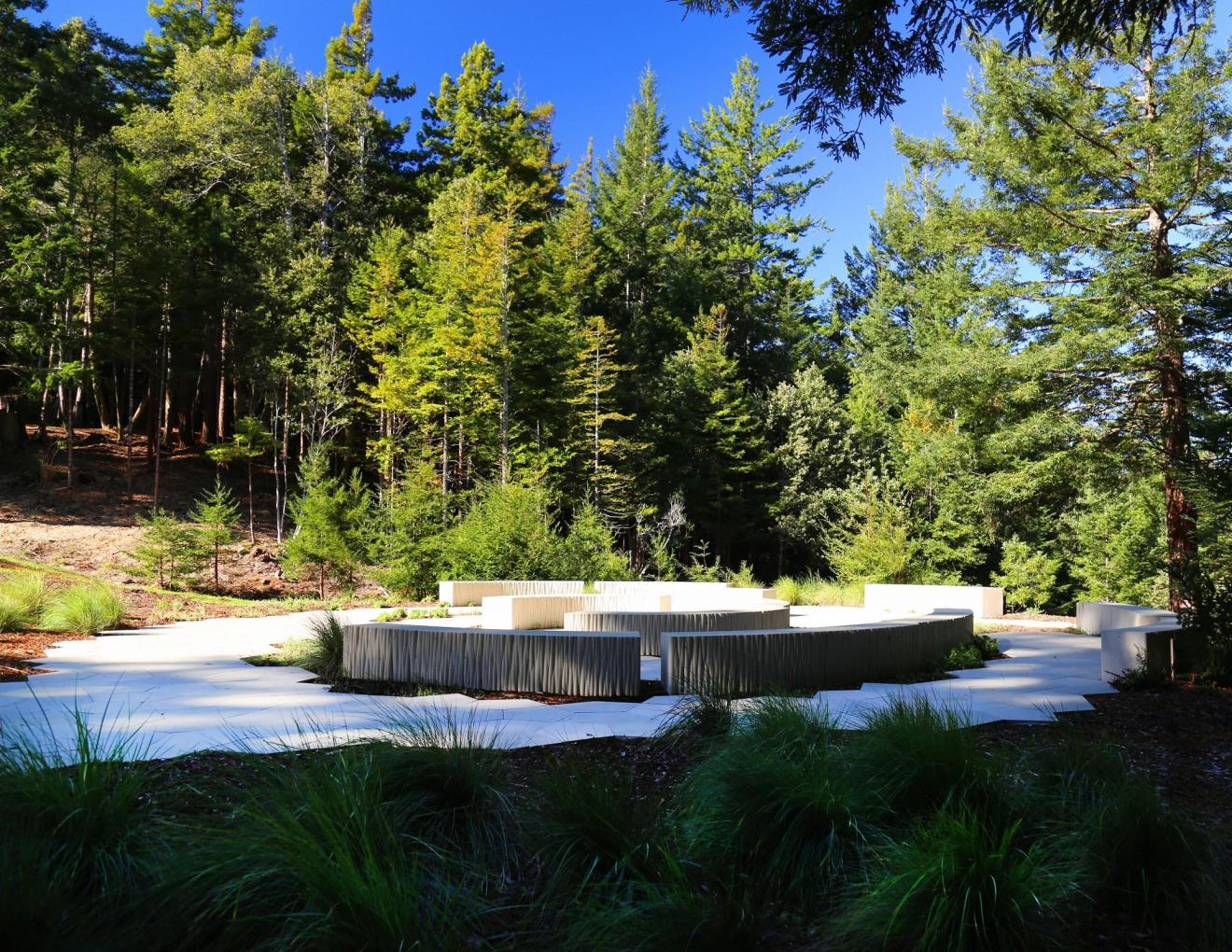
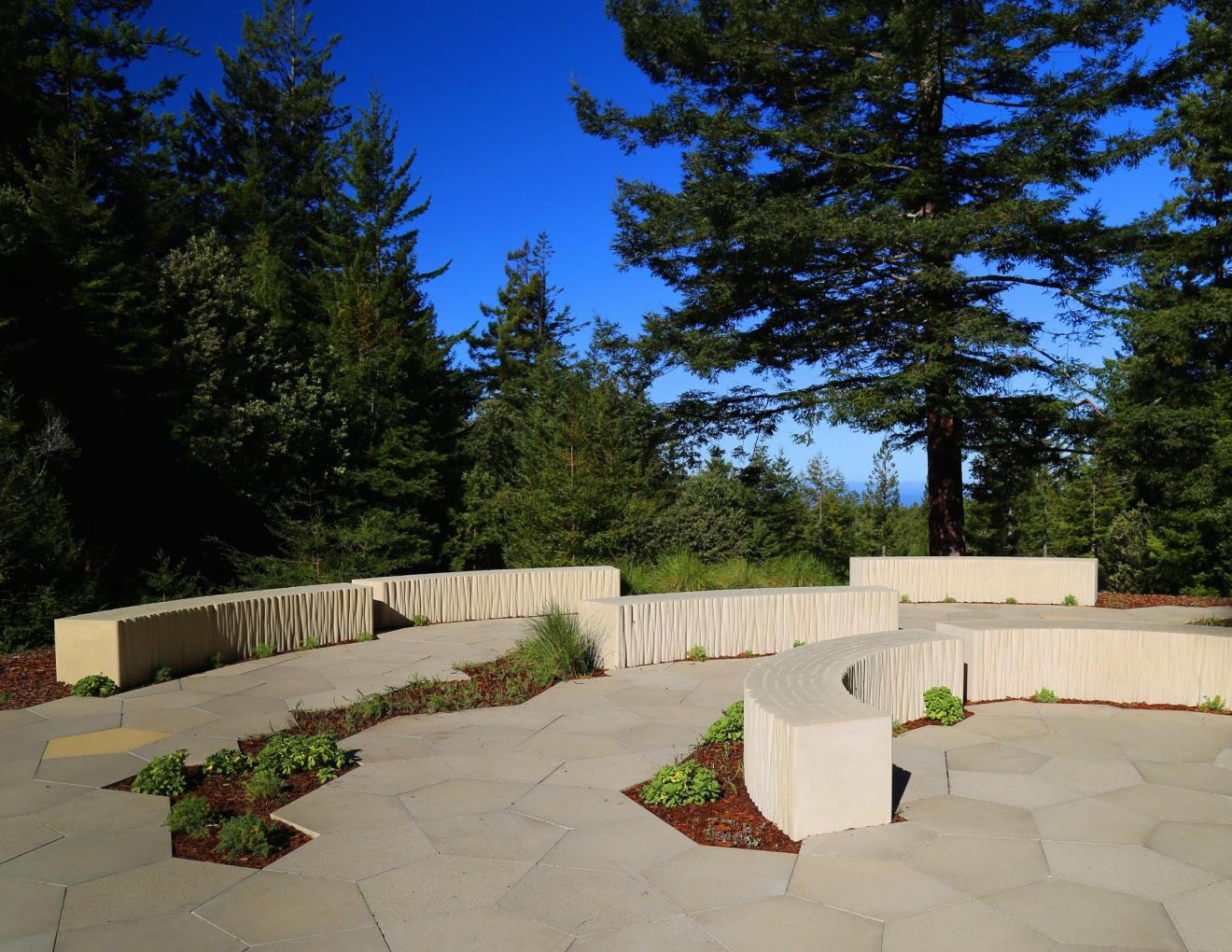
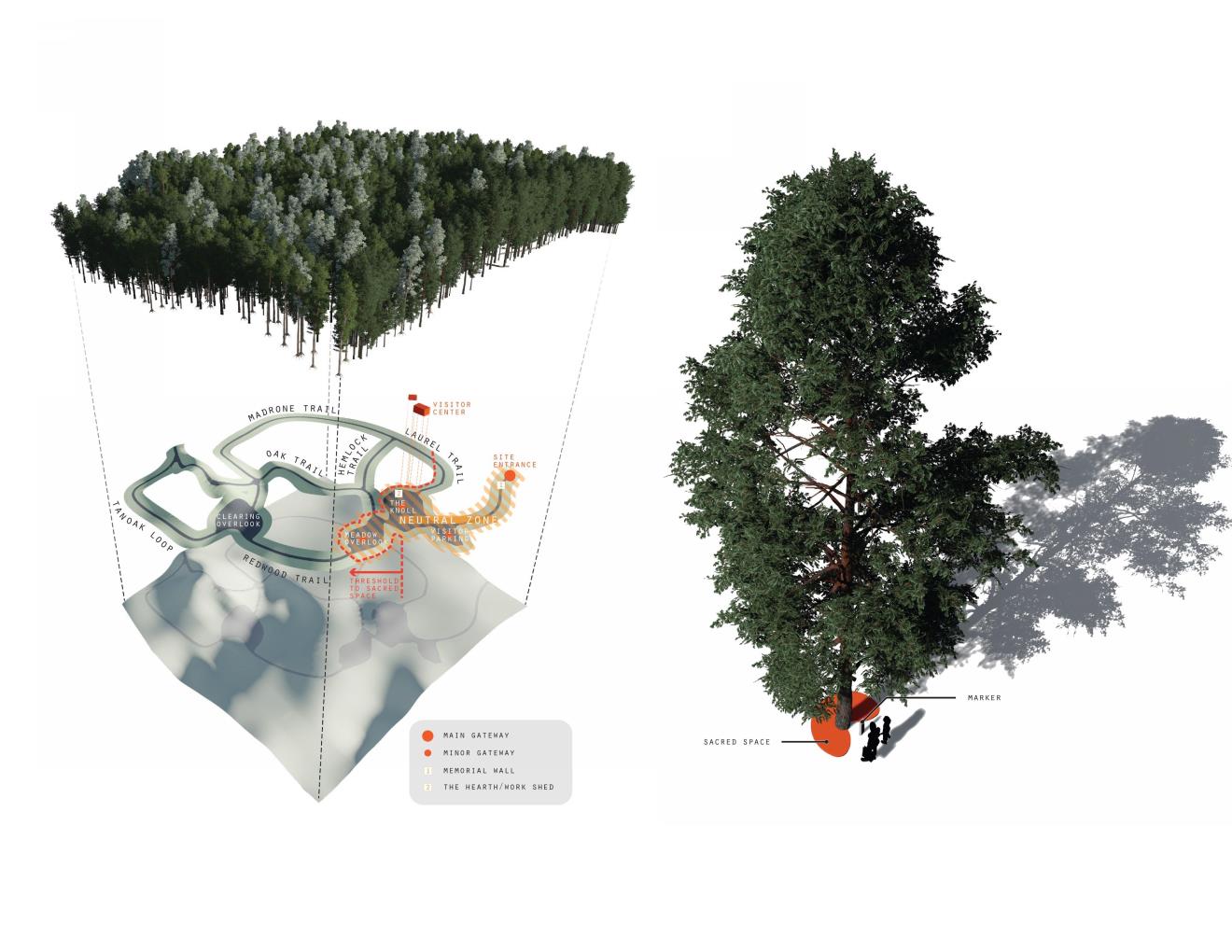
Client: Better Place Forests
Location: San Francisco, CA, United States
Completion date: 2020
Project Team
Design Director and Landscape Architect
David Fletcher
Fletcher Studio
Design Lead and Landscape Architect
Lauren Ewald
Fletcher Studio
Architect
Mark Hogan and Ian Dunn
OpenScope Studio
Architect
EB Min
Min Design Company
Founders Memorial
Andrew Kudless
Matsys
Overview
The memorialization of life and the passage of time is a profoundly difficult design challenge. This is particularly true when it comes to the passing of loved ones. Traditional burial in cemeteries is a key part of current practices, but with society evolving – and decreasing amounts of physical space for cemeteries, and toxins found in traditional burial methods – new environmentally-friendly strategies for memorializing loved ones is critical.
The Better Place Forests site in Point Arena, California is America’s first spreading forest cemetery. Within these protected forests, families choose trees to mark the place where they’ll spread their loved ones’ ashes over generations. The concept has a simple poetry — merging ritual, memorial, and forest conservation.
The project offers an alternative to the traditional cemetery, a conservation system of tree sponsorship that preserves, restores, and manages large forests in the US. The studio acted as the prime consultant and assembled a team of forest ecologists, artists, designers, and other consultants to realize the first project in Northern California. Their work included master-planning the property, designing structures, spaces, trail systems, wayfinding and signage, the burial marker, and habitat restoration.
Goals
Designing an experience that’s more about a place than its constructed elements requires a certain discipline. The plan and architecture gently frame a sequence of events: arrival, orientation, memory, threshold, and release. An entry road descends into the site and arrives at a visitors center, designed in collaboration with an architecture firm. Sited at the crest of a hill, this singular building is a place of orientation.
At the tree spreading sites a simple brass disc is inserted into the soil, to mark each life. Inspired by the vernacular of survey markers, this subtle tool provides a permanent marker without detracting from the overall context of the forest. On their own, each survey marker represents a life, but as a collection, the markers commemorate a diverse spectrum of memories, cultures, beliefs, achievements, failures, sadness and joy.
A bolder gesture was needed to reflect the importance of gathering, while recognizing the efforts and lives of the donors who helped realize this first spreading forest. The design team collaborated with an artist to create the Founders Memorial, which consists of a series of concentric benches resembling the growth rings of a tree. Walking paths wind between the benches, with low plantings interspersed throughout.
Process
The concept has a simple poetry — merging ritual, memorial, and forest conservation — yet its realization involved a large team of design and technical specialists, led by the submitting landscape architecture firm. Working with Better Place Forests for over a year, we produced drawings, digital, and physical models to test concepts and to develop standards for all forests to come. We assembled a team of like-minded creative individuals, from local craftsmen to local forest stewards, who are dedicated to the idea of forest conservation and design excellence.
The process was highly iterative, as the team sought to go beyond designing spaces in and of themselves. Instead, we wanted to design universal human experiences for a new type of sacred setting, the spreading forest cemetery. We familiarized ourselves deeply with the site, studying its unique moments and identifying special areas for respite tucked into the forest. Each manmade element is carefully curated to either mark a key moment (such a threshold), or alternatively ‘disappear’ into the background as visitors gather and celebrate lives of those who have passed.
Additional Information
Within the ever-changing forest, the materiality of the visitors center conveys a reassuring sense of permanence — that it always has and always will sit on this site. A deep, folded Corten steel roof shades and protects the building. The Corten will weather naturally, along with the locally harvested and milled redwood decking and siding. Carefully oriented redwood fins screen the glass-enclosed meeting rooms while capturing views outward. Moving through the threshold, visitors enter the memorial forests. The old ‘skid’ roads, originally established for logging, define the main routes through the forest, while tributary trails branch off into more secluded spaces. This network of trails and openings flows with the land, guided by the knowledge of conservators and local trail builders, and eventually rises to a knoll with views to the sea and horizon. Every detail from the landscape and architecture, to the signage and memorial markers work to establish a quiet and reverent human presence. While each forest cemetery implemented by the Client will have a unique character, the underpinning vision will remain: to preserve and honor the transcendent beauty of the landscape and ultimately the people who choose this forest as their final resting place.